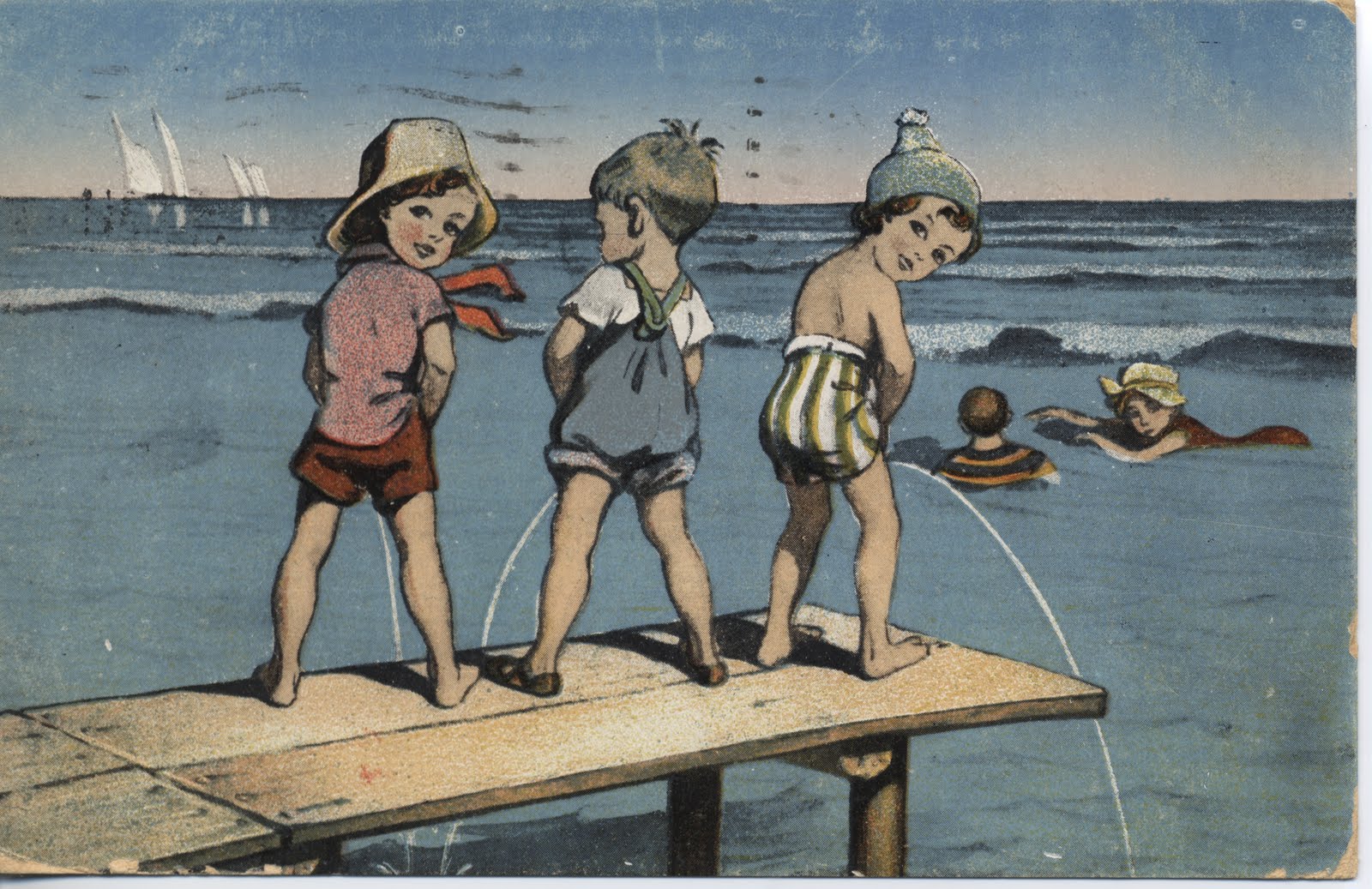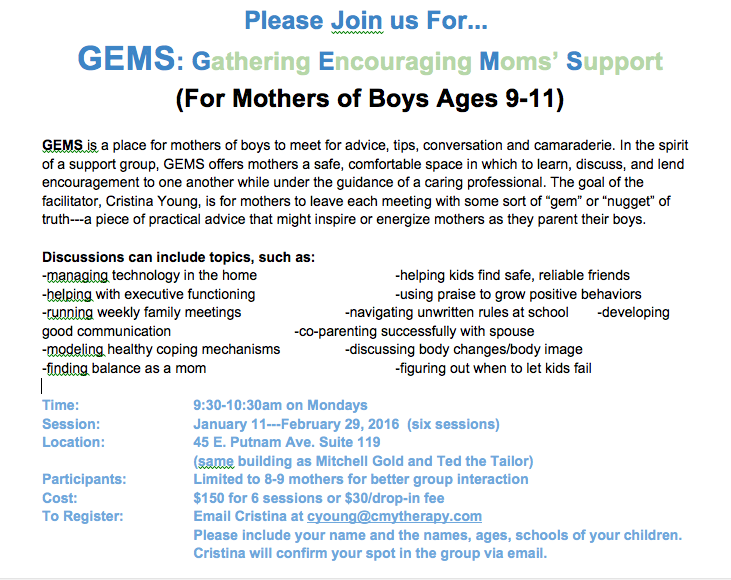 After having my only son JT, time and time again mothers have told me that parenting a boy is very different than parenting a girl. Having been raised in a home with 5 brothers I already have some sense of what those differences might look like. Can you say “breaking all the rules”?!? The thing I hear most mamas being baffled by is the incessant busy energy that boys hold within them. While I have a sense of what is ahead I thought it might be a good idea to get some advice from one of my favorite pros, Cristina Young. Her words always offer up compassion, support, and wisdom. Just what every mom needs on her toughest days. Welcome back Cristina, thanks for your thoughts on parenting boys. And before we begin I must also remind all my readers that no two children are the same – so Cristina’s advice might not be exactly what you need for your child. It’s always worth a try testing out a new technique, and if it doesn’t work – fear not there is always another option. Reach out to Cristina Young directly at cyoung
After having my only son JT, time and time again mothers have told me that parenting a boy is very different than parenting a girl. Having been raised in a home with 5 brothers I already have some sense of what those differences might look like. Can you say “breaking all the rules”?!? The thing I hear most mamas being baffled by is the incessant busy energy that boys hold within them. While I have a sense of what is ahead I thought it might be a good idea to get some advice from one of my favorite pros, Cristina Young. Her words always offer up compassion, support, and wisdom. Just what every mom needs on her toughest days. Welcome back Cristina, thanks for your thoughts on parenting boys. And before we begin I must also remind all my readers that no two children are the same – so Cristina’s advice might not be exactly what you need for your child. It’s always worth a try testing out a new technique, and if it doesn’t work – fear not there is always another option. Reach out to Cristina Young directly at cyoung
Q&A with Cristina Young L.C.S.W., of Cristina Young Therapy
What have you noticed recently when it comes to parents and boys?
I noticed recently that I had SO many boys and teenage boy clients with anxiety coming to my practice. Their parents, especially the mothers, were frustrated and feeling helpless. Witnessing all of this led me to want to form a support group for those moms.
What are parents asking you and what are their concerns?
Most parents want tools and strategies. None of us like to feel like, when we reach in our metaphoric back pocket, we are all out of tools. I love working with parents because that kind of work is hopeful; there’s always another tip or idea to help build communication, respect, and rapport between children and parents.
What are some of the differences between raising boys and girls?
Many boys tend to be more reticent about their feelings, especially about their fears or anxieties. It seems to be harder for the boys to label what they are thinking and feeling. Like the girls, however, the boys are trying to figure out the pecking order at school. They want to know which friends are safe and reliable, but it seems a bit harder for them to connect the dots on that front. Girls tend to be more volatile and emotional, and often more expressive about what they are feeling. However, girls also tend to make the necessary connections between their actions and what they elicit in others. Girls seem more fluent in conversations about feelings and emotions. (All of these are generalizations, of course, but patterns do tend to emerge after you’ve done this for a while).
Have you found that certain ways of talking to boys work better than others?
Most of the boys in my office usually need to move. We throw a mini basketball while talking or we sit on the floor and roll balls or juggle balls while pondering the solution to something together. I have a basket of “fidgets” which comes in handy for many of my kids (both boys and girls) who like to fiddle with something in their hands while they try to articulate their feelings. I also have a huge white board which we use to sketch out diagrams and solutions in many colors.
What parenting tools (timers/lists/threats???) work particularly well with boys?
One of the tools that works particularly well with all kids is empathy and validation. The term often used is “connect before you correct.” I think this is one of the most powerful tools I teach parents. The idea is that if we can validate what a kid is experiencing by mirroring it back to them and labeling it, they calm down a bit and know that we are on their team. Once we get to that stage, we can begin problem-solving.
For example, if a child is upset because another child took their toy without permission, we might say to the upset child: “Wow, it looks like you are really frustrated.” We label the emotion and validate them. We “name it to tame it.” Once we affix a label to an emotion, we have already begun the process of reigning in the emotion; we’ve put an end to “the emotional hijacking” that was in place. Once kids feel validated, you can see their shoulders relax and their face calm. Then we, as parents, can begin to brainstorm with the child about how to solve the problem and/or how to avert this type of “crisis” next time. In the meantime, we’ve modeled for them how helpful it is to calm down first before we try to solve a problem. We’ve also demonstrated for them that we “get” them and we truly know them. The more they feel this through and through, the more likely they are to cooperate with us when faced with conflict. These are the building blocks of unconditional love.
Anything else you want to ad?
Yes! One of the changes I have made in my practice recently is leaning toward working more and more with adults and parents. I really enjoy the macro work we can do together as adults on behalf of the family. I find that working only with the young people (children or adolescents) is not as impactful. When I take on a new, young client now, I explain to the parent(s) that I will meet with them first, then with their child/adolescent, and next with the parent and the child/adolescent together. We will alternate sessions in this format so that many conversations happen in the presence of me, the child, and the parent simultaneously. Making changes at the family systems level results in longer, more sustainable change for all. Often the child or adolescent is just a symptom of a larger, more systemic problem in the family. When families are on board with this approach, we can make great strides together.
On a final note, I have more adult, female clients now than ever. I adore working with women to help them find their voice, define their boundaries, juggle their many roles, and clarify their position in life as mother, daughter, employee, friend, etc. My work has taught me that women continue to be the backbone of our society. I love being able to support women because our culture desperately needs strong women!
______________________________________________________________
Cristina has a master’s in social work with degrees from Columbia University and the University of Southern California. She is a psychotherapist in private practice with offices in Greenwich and Stamford, CT. Cristina specializes in working with families and children, and has worked extensively as a parent educator. She brings a strong background in education to her practice and has worked as a school counselor, teacher, curriculum developer, and admissions officer in a variety of both public and private school settings here in Connecticut, as well as in New York, California, Hawaii, and Maryland. As a social worker, Cristina has worked in a variety of settings including family counseling centers, group homes for abused children, hospitals and medical clinics, and in foster/adopt programs. Cristina uses a family systems lens to work in a relational and holistic way with families. She is a unique asset to parents and children navigating the school-age years. Cristina and her husband have three children, ages 14, 11, and 9.
Cristina has recently started a support group for mothers of boys. It’s not too late to join this session! Each week tackles a different topic. See info below for the weekly group meeting times and topics.



Leave a Comment